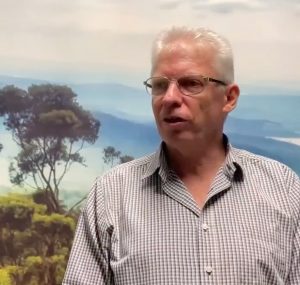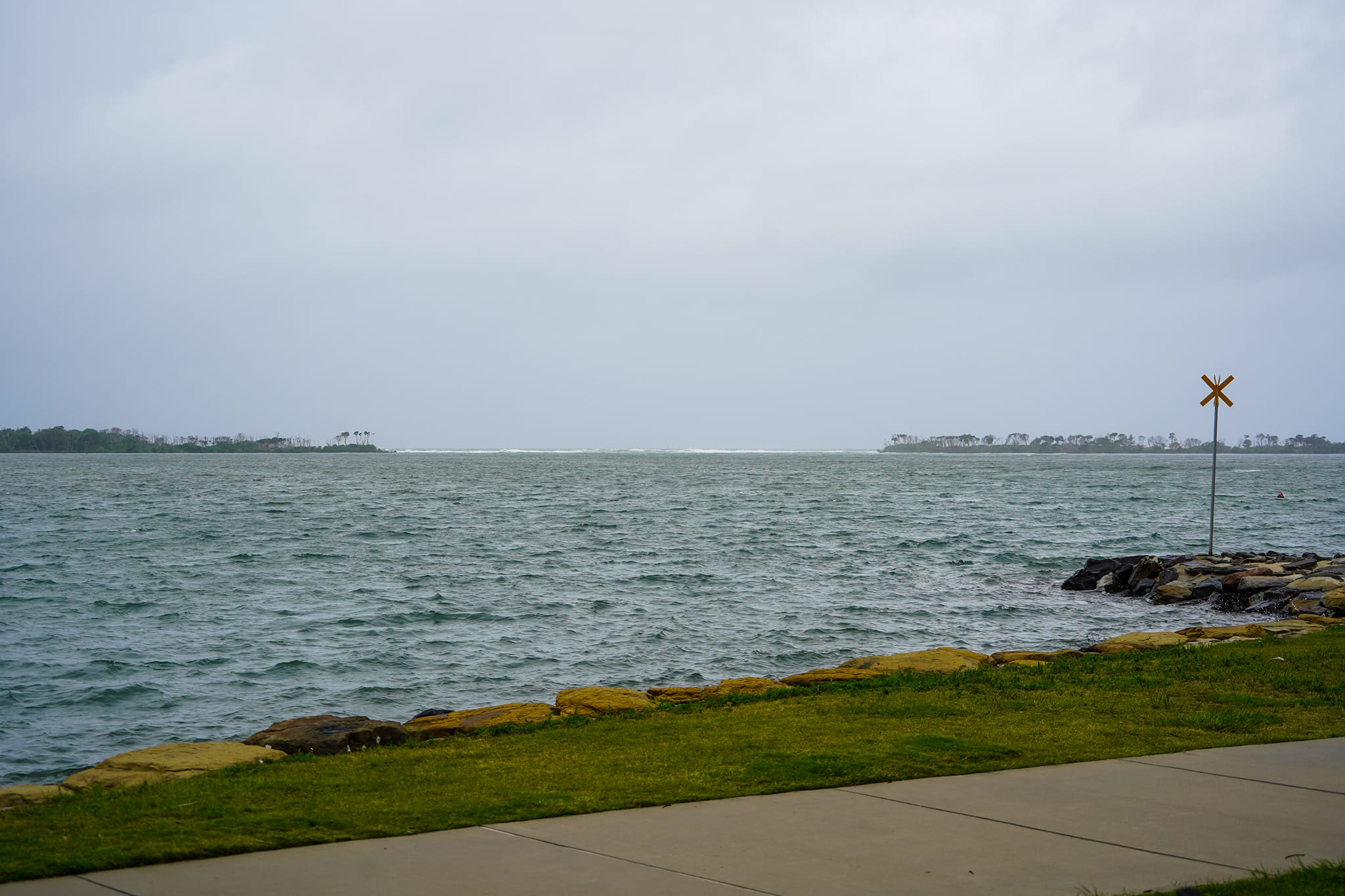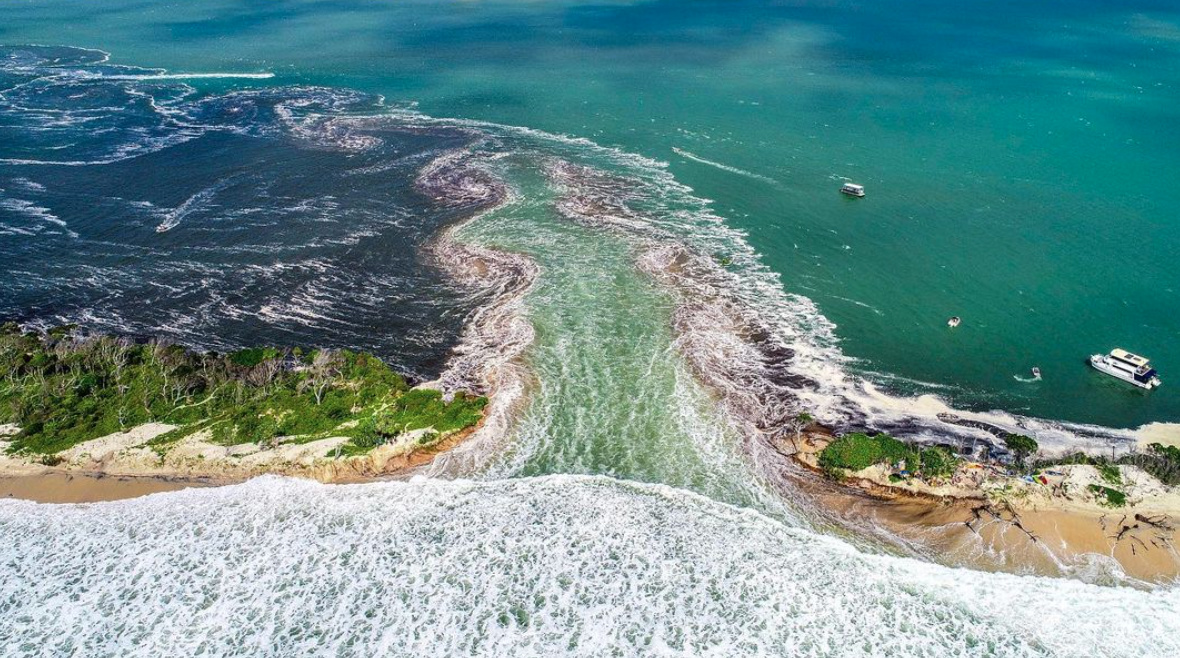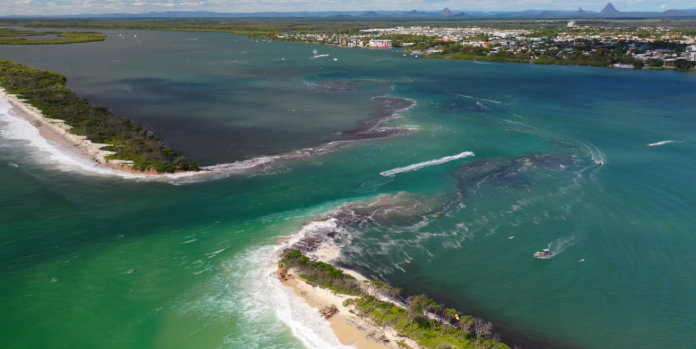The State Government’s principal coastal scientist has predicted the Bribie Island breach could become the “dominant” entrance to the Pumicestone Passage, but there are no plans for “remedial actions”.
Sel Sultmann this week inspected the breakthrough at the northern section of the Bribie spit which happened on January 2.
He told Sunshine Coast News that the opening would likely remain.
“The new channel may become the dominant entrance to northern Pumicestone Passage and if this is the case it is likely the existing entrance (the Caloundra Bar) may slowly infill,” he said.
The dramatic breach has affected some people along the passage and there was significant concern from community groups and long-time locals.
But Mr Sultmann said the department was unlikely to do anything in the wake of the breakthrough, which was in a marine park conservation zone.
“A key management principle of areas with high conservation and cultural value is to keep the areas as close as possible to its natural state, without human interference,” he said.

“As this breakthrough is a naturally occurring event in a dynamic coastal environment at the tip of Bribie Island, there are no planned remedial actions.
“DES will continue to monitor the break-through, and boaties and people on Bribie Island are advised to avoid the area due to instability recently caused by the weather event.
“While natural processes will continue to occur in this dynamic environment, it is unlikely that there will be any adverse impact to the community or properties at Golden Beach.”
However, Sunshine Coast Council met with community members on Wednesday and has indicated it will take action.
“Council will continue to focus on its area of responsibility by monitoring any impact on Golden Beach as result of the changes at Bribie Island, while supporting the Queensland Government as needed,” a council spokesperson said.
Council said it was committed to protecting Golden Beach “by continuing to implement the Bribie Island Breakthrough Action Plan, which includes the upcoming replacement of a groyne at Burke Street, Golden Beach, and upgrades to the existing Golden Beach seawall”.
“In around mid-February, once the weather and the tides have stabilised in the Pumicestone Passage, council will bring forward one of its regular monitoring activities, a beach survey, to see if there have been any erosion impacts on Golden Beach as a result of the breakthrough.”
There is a solid swell expected during the next week, which could have further impact on the area.
Weather forecasting website Windguru predicted an easterly swell of between 1m to 2m during the next week, before increasing to 2m+ from January 21.
The next king tide’s due from January 31 to February 3.
Stay up-to-date with the latest news coming by subscribing to our free daily news feed. All it requires is your name and email. See SUBSCRIBE at the top of this article.

Mr Sultmann said it was not the first time Bribie Island’s landscape had changed.
“Northern Bribie Island has a long history of coastal erosion,” he said.
“In the early 1970s, the entrance to Pumicestone Passage was well south of its present location and just north of the new entrance position.”
He said this was the second time in 14 months that this section of Bribie Island was over-washed.
But this time, the waves were powerful enough to cut a new tidal channel through the island, he said.
The Coast Guard informed him that the channel had widened and deepened. They estimated it was almost 300m wide at present.
When asked whether the incident was rare, Mr Sulman said: “It is difficult to compare the current breakthrough on Bribie Island with other sections of Queensland’s coastline, given that each environment is subject to different natural processes.
“This type of process is not unique – the Maroochy River cut a new ocean entrance through the dunes south of Pincushion Island in 1999.”
Mr Sultmann has been involved in coastal management with the State Government for more than 30 years, helping local governments address sea erosion, storm tide inundation and the emerging threat of climate change sea level rise.






